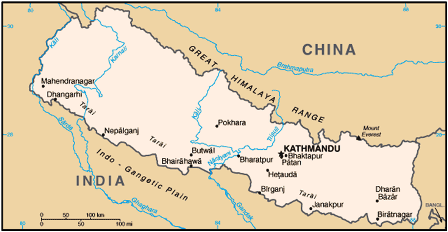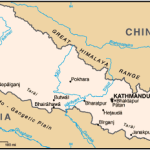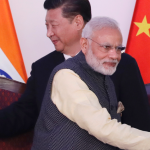‘‘Chinese interest is purely commercial, but India is interested in exploring historical bonds between the two countries’’ said Swaran Singh in May 2018, a professor of International Relations at Jawahar Lal University in New Delhi. Such a cultural tie that Nepal has with India is highlighted by the Indian diplomats and politicians from time to time to stress the ‘special relations’ between India and Nepal.
However, the ‘special relations’ has hardly got anything to do when it comes to geopolitics. For good or bad, Nepal has been played here and there for its geopolitical vulnerability, by India. In 1989, the Rajiv Gandhi-led government imposed an economic blockade against Nepal because of a dispute over transit treaties and its uneasiness over Nepal’s growing closeness with China. Again in 2015 immediately after the devastating earthquake, citing deficiencies in the newly promulgated new constitution of Nepal, India imposed economic blockade again – but, the recent embargo was a failure as it could not make such a strategic impact as it managed to do so previously.
This time for Nepal, China became a saviour from India by providing the necessary daily supplies, but not the other way around due to the ‘special relationship’.
Although the alternative which may now have come under the disguise of BRI seems dubious and dangerous to play with as more and more of China death-trap stories are coming from the other developing countries – that, some of them may have initially calculated China could be an economical alternative to the existing Western financial institutions. Despite such warnings, for Nepal, it has not been of that big a concern, partly due to its geopolitical vulnerability.
It was obvious to note the uneasiness of India as China expanded its influence in its traditional foothold, and Kathmandu was wary of the growing Sino-Indo rivalry – however, the surprise came on 18 December 2018 with the press release of the U.S. Department of the State after Secretary Pompeo’s meeting with the visiting Nepalese Foreign Minister Gyawali. The press release is quite a significant step for Nepalese foreign policy as it highlights on ‘Nepal’s central role in a free, open, and prosperous Indo-Pacific’.
Many see the visit of Gyawali as part of Trump administration’s effort to thwart increasing Chinese influence in Nepal. Being part of the Indo-Pacific and BRI, it has now placed Nepal at the centre of strategic competition in the Himalayan belt between Beijing and not India as most in Kathmandu claims, but with the U.S.
The much-talked Sino-Indo rivalry in Nepal will have lesser importance; it is because the actual threat that exists between these countries are ‘asymmetric’. However, the real geopolitical competition in Nepal would be between the U.S. and China in the future, similar to that of the Cold War – and, Nepal already has a track record of its land being used as a launching pad of the CIA backed Khampa guerrillas against the PLA in Tibet.
As it was important during the Cold War that geopolitically vulnerable small countries mattered in the game of the Great Power, it seems that the time has come again. Sooner or later, countries like Nepal must decide in between the two of them, Indo-Pacific or BRI as it will be impossible to play a part in both games.





Leave a Reply